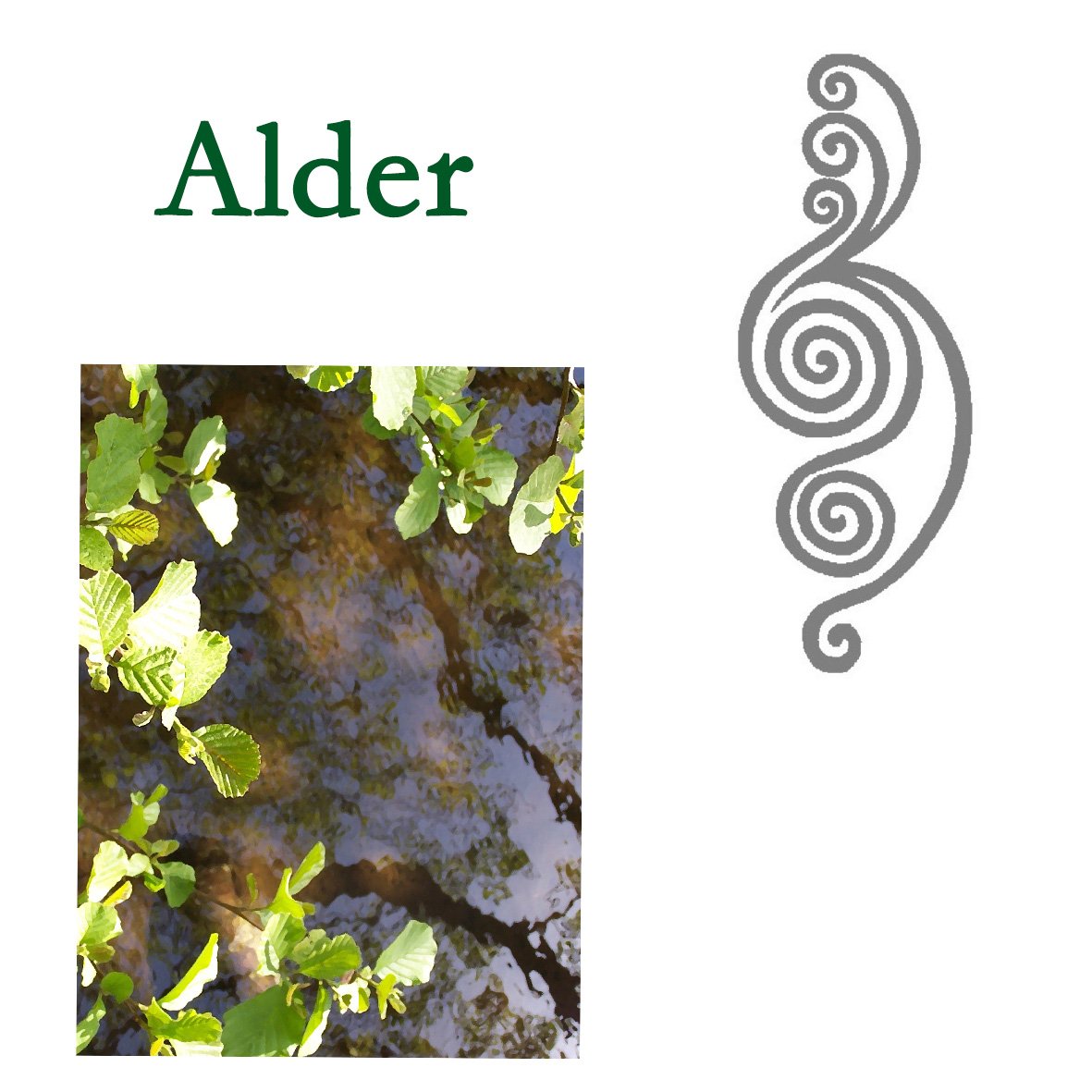ALDER (Alnus glutinosa)
Key: Release.
Alder grows throughout the British Isles along rivers and streams. The lack of oxygen in the wet soil is no problem to the tree as its roots are home to nitrogen-fixing bacteria that help to free up nutrients that the alder can use. In fact the common or black alder prefers to have its dark red roots growing in a constant flow of water. These roots are a significant factor in the maintenance of our riverbanks and also increase the fertility of the soil.
In winter alder stands out as a tall wall of upright trunks and purple-black branches scattered with the cone-like black seedcases. In early spring male catkins begin to fill out turning the tree a reddy orange before the deep green glossy leaves show.
Alder when cut turns orange – red, and thus joins yew and blackthorn as a “bleeding tree”. The timber is used where there is constant wetting and drying occurs as it is extremely resistant to rot. As a coppice it provides fast-growing poles for smallwork and high quality charcoal.
Alder essence focuses in the abdominal area where it can strengthen the stomach, liver and gall-bladder. It reduces nervousness and anxiety that arises from known causes and that are consciously disturbing.
The Central meridian (Conception Vessel), which provides a source of primary life-energy to the meridian system and which focuses on survival issues and self-identity, is energised. Stomach and Small Intestine meridians are also activated promoting an increase of happiness and joy.
A clarity is brought to the mind and the mental body, associated with thought processes and belief systems, is strengthened. With this cleansing of the mental body naturally related physical tensions can be eased, so that alder is useful for muscular tension that has an emotional component. (Combines well with dandelion extract or essence for relaxation of muscle tissue).
The chakras at the heart and solar plexus are activated. This increases the sense of well-being and life-energy available, which naturally reduces anxiety levels. Energy is able to flow from the solar plexus to the heart across the diaphragm which is often a source of blockage to the flow of energies because of stress and tension accumulated there. When the heart chakra receives more energy the entire system becomes better balanced and is able to release stored stresses more easily. This may be expressed as involuntary deep breaths, sighs or crying as a means to release old wounds.
All these qualities of alder combine to increase the speed of action, effectiveness and absorption of other remedies.
Signature: Root nodules that free trapped nitrogen from waterlogged soil : the essence has the ability to release deep tensions and increase the life-energy available.
Alder exists within the dynamic flowing environment of moving water, yet it stabilises all elements, reintroduces life and remains flexible.
Comments: Traditionally associated with Bran the Blessed, god of the Underworld, a protector and rescuer from death, a friendly giant. Bran is associated with the Celtic cult of the head. The head was seen as a receptacle of power, protection and wisdom. The black seed-capsules of alder look like miniature heads hanging from the purple-black branches of midwinter. Dwelling on the boundary of different worlds – earth and water – alder, with its imperishable wood used by builders, smiths and smelters is a tree of fire, durability and the force of life.
Alder provides many dyes from its parts: bark alone gives red and is the basis for black dyes, bark and young shoots give yellow and shades of orange-pink, fresh wood provides a pinkish fawn, catkins give green.
Alder bark is tonic and astringent, useful for swellings and inflammations, particularly of the throat. Bags of heated leaves are said to cure rheumatism.

